Cats may not be able to speak but they sure can make their feelings known in other ways. It’s probably obvious when your cat is mad (growling and hissing usually get the point across!) but there are some other ways your cat might communicate feelings of annoyance.
Knowing how to read cat body language can help you avoid being scratched or bitten, or making your cat angrier. An angry cat will usually be tense and might pin their ears flat against their head, growl, hiss, thump their tail, try to swipe if anyone comes too close, or run away and hide. Sudden, frequent moody behavior in cats can sometimes be a symptom of pain or illness, so be sure to get your cat checked out by your veterinarian.Key Takeaways
To avoid being scratched or bitten, or making your cat angrier, it’s important to know how to read their body language. Read on to learn more about how to tell if your cat is angry.
1. Avoiding People
Retreating is one of the first things cats might do if they don’t feel like interacting.
This is the first clue you might have that your cat is feeling annoyed. If your cat is avoiding contact with people or hiding then chances are they just want to be left alone. Of course, your cat might also be feeling under the weather, so be sure to keep a close eye and take them to the veterinarian if you are at all concerned.
Also Read: 8 Ways To Help a Scared and Fearful Cat Be Confident
2. Tail Swishing
Depending on the situation, a swishing or flicking tail usually means your cat is either excited or annoyed.
We’ve all witnessed our cat’s tails flicking from side to side. This can either mean that your cat is excited or annoyed depending on the situation. Either way, a swishing or flicking tail are warnings that your cat is in a high state of arousal, and now is not the time to try and pet them. Tail swishing might progress to tail thumping if your cat gets even angrier. A cat’s tail thwack is a clear indicator that your cat is annoyed about something.
Also Read: What Your Cat’s Tail Can Tell You
3. Crouched Low to the Ground
Cats crouch low to the ground when they are feeling threatened and scared, or angry and aggressive.
If your cat is crouched low to the ground, they might be feeling threatened and frightened or angry and defensive. Your cat might be in a corner or small space or be looking down on you from a high surface. You cat might also be growling or hissing. Now is the time to leave your cat alone to calm down.
Also Read: 10 Signs Your Cat Really Does Trust You
4. Stood With Back Arched and Hackles Up
The classic “Halloween cat” pose with back arched and hair standing on end is a clear sign your cat is angry, scared, or both.
A cat that is angry and ready to fight will often stand with their back arched and fur stood on end. This is your cat’s way of making themself as large and as threatening as possible. Cats often do this when they are preparing to defend their territory from another cat.
Also Read: Why Do Cats Arch Their Backs? Top 8 Reasons
5. Ears Flat Back Against Her Head
Flattened ears, especially if paired with growling or hissing, is sign to give your cat space.
Your cat’s ears are a good indicator of mood. A scared cat will often flatten their ears back against their head. They might also be crouched low to the ground and growling and hissing. As fear can quickly escalate to anger and aggression in cats, you shouldn’t try to touch your cat when they are showing these signs as you are likely to get scratched or bitten.
Also Read: Do Cats Get Annoyed? 10 Subtle Signs To Watch Out For
6. Meowing
Cats meow for many different reasons, but they sometimes do this when they are angry.
Meowing doesn’t always mean that a cat is angry, in fact, many cats meow when they are happy or they want to interact with you. You will know what is normal for your cat and it can help to read the context of the situation to decide whether or not your cat is angry. Is your cat demonstrating any of the other behaviors mentioned in this article? Or are they just meowing to greet you as you walk through the door?
Also Read: Excessive Meowing In Cats Explained (Causes And Solutions)
7. Growling, Hissing, and Spitting
Cats growl, hiss, and spit to convey displeasure to people, other cats, and other animals like dogs.
Growling, hissing, and spitting are probably the most obvious warnings that your cat is angry and upset. If your cat is growling or hissing at you then you can safely assume that they are angry and want to be left alone. Cats might also growl or hiss at another cat to signal their displeasure, perhaps for trying to steal their territory or getting too close.
Also Read: Do Mother Cats Discipline Their Kittens? A Veterinarian Explains
8. Swiping
Swiping at an insect or other prey is normal cat behavior, but if your cat swipes at you or another cat you can be sure they are mad.
If your cat is swiping or swatting at you it couldn’t be any clearer that they are annoyed and want you to go away. Cats might also growl or hiss when swiping, letting you know that they really mean it!
Also Read: Why Does My Cat Bite Me When I Pet Her?
9. Purring
Though more often associated with pleasure and contentment, some cats purr when angry.
Purring usually means that your cat is happy and contented but occasionally cats will purr when they’re experiencing negative emotions such as fear or anger too. The situation should help you decide whether your cat is purring out of happiness or anger!
Also Read: Do Cats Love Their Owners?
10. Glaring
In the feline world, a direct stare, especially with eyes narrowed, can communicate anger or annoyance.
Cats might not have the same facial expressions as us humans but that doesn’t mean they’re not capable of an angry glare! Your cat’s eyes can be very expressive. If your cat is staring at you with her eyes narrowed and her tail thumping, this signals that she’s probably annoyed at you.
What Makes Cats Angry?
Various things might make your cat angry such as:
- Another cat in the neighborhood trying to steal their territory
- Another cat in the household that is blocking their access to resources such as the litter box, food, water bowls, or a bed
- A person interacting with them in a way that they don’t like, for example touching their stomach
- A person interacting with they when they don’t want interaction, for example, an examination by the veterinarian
- Pain or illness
Also Read: How To Have A Better Relationship With Your Cat
How Can I Stop My Cat From Being Angry?
The best way to stop your cat from being angry is to leave them alone to calm down. Allow them the chance to escape and hide away somewhere if they want to. Forcing an interaction will only make your cat angrier, and you are likely to get scratched or bitten!
The best thing to do is try and prevent your cat from becoming angry in the first place! There are several things you can do to help with this:
Also Read: How To Get Your Cat To Use A Scratching Post
Ensure Adequate Resources in Multi-Cat Households
Make sure all your cats have their own litter boxes, scratching posts, and food bowls.
If you have a multi-cat household, it is recommended that you have at least one of each resource (litter box, bed, food bowl, etc.) per cat, plus one extra. This is the best way to prevent your cats from competing over resources and becoming frustrated with each other.
Also Read: Why Does My Cat Steal My Other Cat’s Food?
Supplements
Synthetic cat pheromones like Feliway can help cats feel calmer, especially during stressful situations.
For cats that are naturally more anxious, or during stressful events such as fireworks or a new baby in the household, there are various calming supplements available.
Feliway makes a synthetic cat pheromone that is proven to help promote feelings of calmness and security and reduce anxiety. It is available as a plug-in diffuser for your home, or a spray that you can use on bedding or in the cat basket.
Also Read: The 7 Best Cat Vitamins And Supplements
Get To Know Your Cat
Respect your cat’s signals if they aren’t in the mood for cuddling.
Learn how to read your cat’s body language. If your cat is flicking their tail about, this indicates a high level of arousal so now is probably not the time to grab them for a cuddle. Be sure to interact with your cat on their terms, giving them the choice to move away and escape if they choose.
Also learn how to touch your cat in a way that they enjoy. For many cats, this is around the head and cheeks and definitely not the belly!
Also Read: Why Does My Cat Lick Me Then Bite Me?
Watch for Signs of Pain or Illness
Sudden, frequent moody behavior in cats can sometimes be a symptom of pain or illness.
If you are concerned that your cat is grumpier than usual, and you can’t find an explanation for it, it could be that this is a sign of illness, or she is in pain. Take your cat to the veterinarian if you are concerned.
Also Read: 5 Reasons You Should Get A Second Cat (And 3 You Shouldn’t)
Final Thoughts
Cats can get annoyed or moody from time to time. Respect your cat’s signals they want to be left alone and try to approach later.
Just like us, cats get angry every now and then. Although they can’t speak, they definitely have other ways in which they can communicate their feelings. Cats’ body language can tell you a lot about their mood.
Get to know your cat and you will soon be able to tell when your cat is annoyed. Try and prevent anger and frustration in your cat where possible, but if they’re already reached boiling point, the best thing to do is leave them well alone until they have calmed down!
Also Read: Why Do Cats Curl Into Balls When Sleeping? A Veterinarian Explains
Frequently Asked Questions
How do you tell if a cat is happy or angry?
It’s usually easy to tell an angry cat from a happy one. A happy cat will usually have a relaxed body posture with her ears in a neutral position. She might also be purring or rubbing her head on you. An angry cat will usually be tense and might have her ears flat back against her head. She might also be growling or hissing.
How do you calm an angry cat?
The best thing you can do when your cat is angry is to leave her completely alone until she has calmed down. Forcing an interaction will only make her angrier and risks you getting scratched or bitten. Sometimes talking to her in a calm voice might help.
How do cats react when they are angry?
An angry cat will often thump her tail, growl, or hiss and may try and swipe if anyone comes too close. If they can, they might choose to run away and hide until they are feeling calmer.
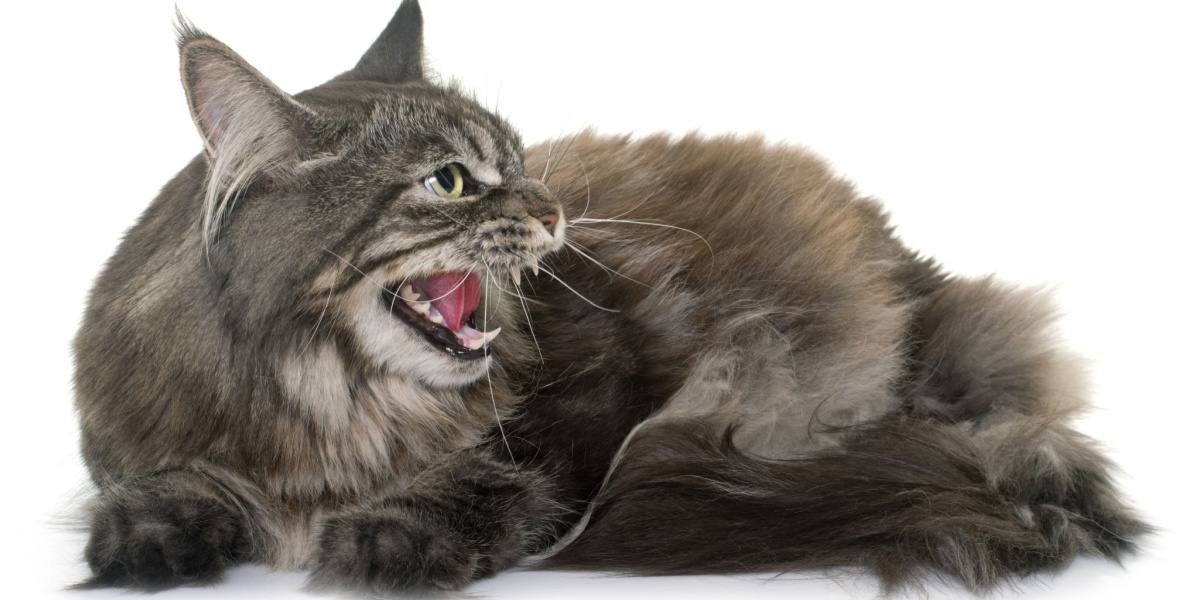
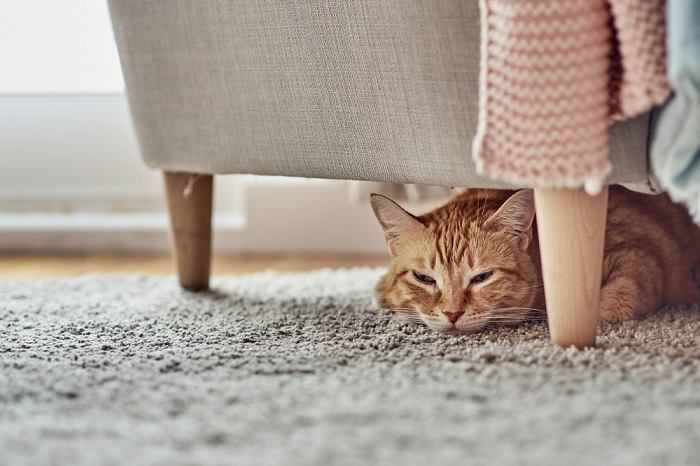

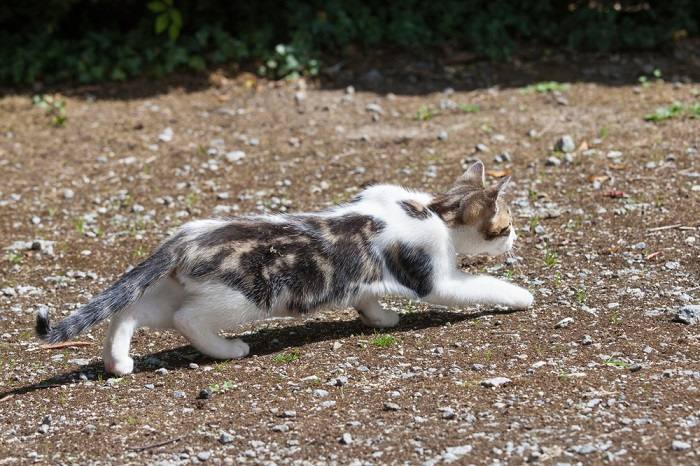

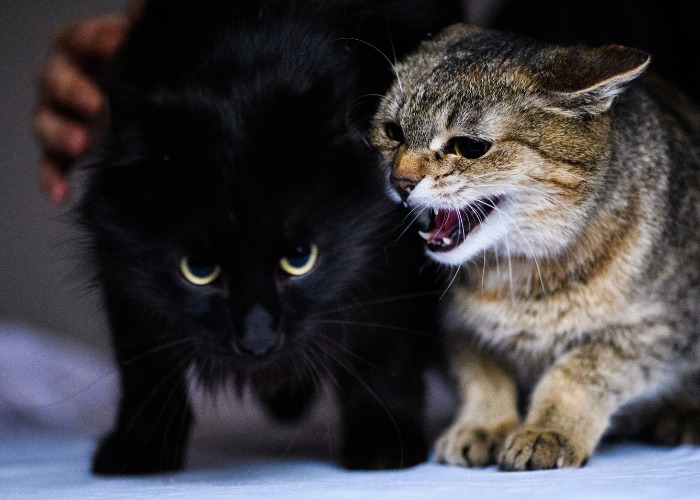
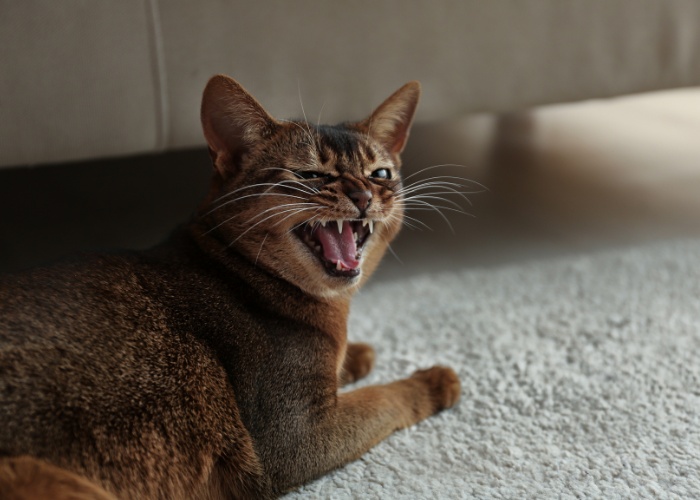
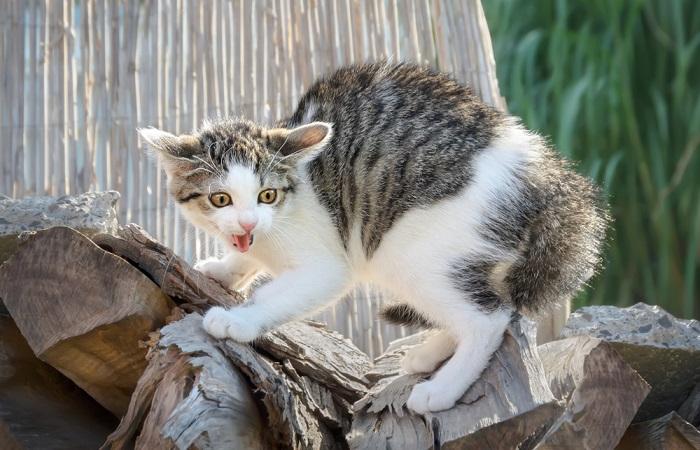
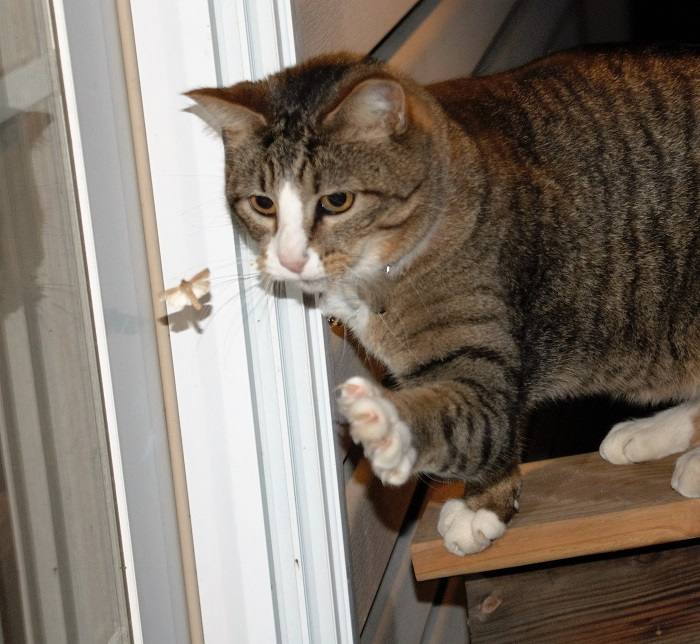
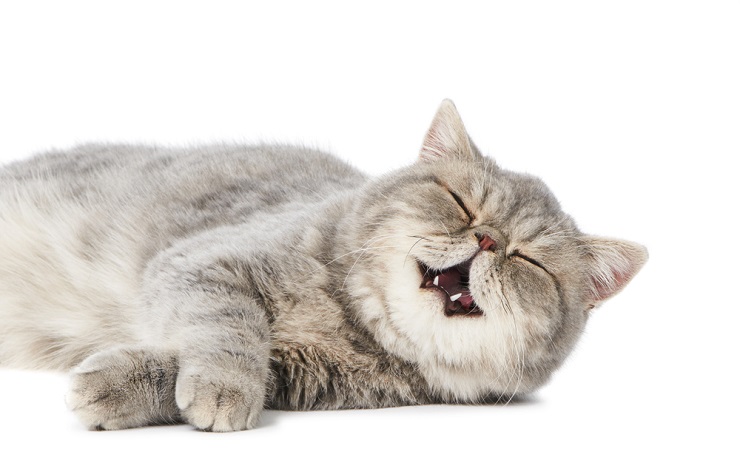
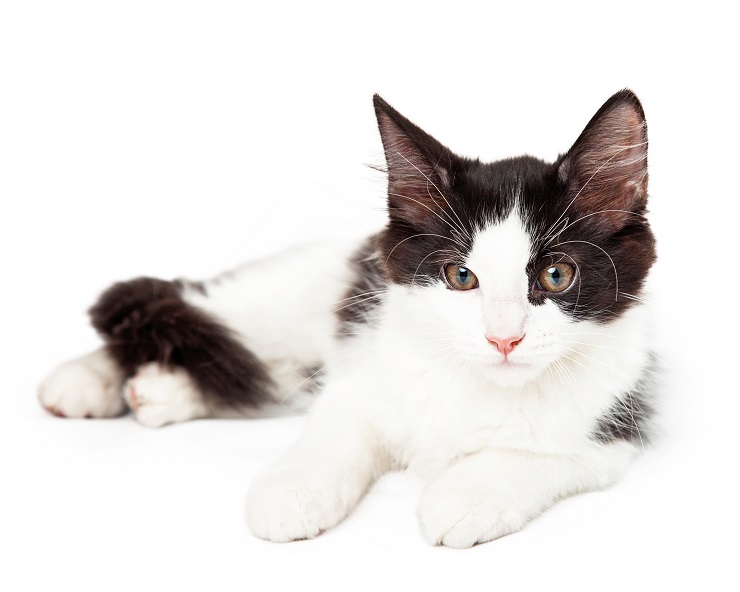
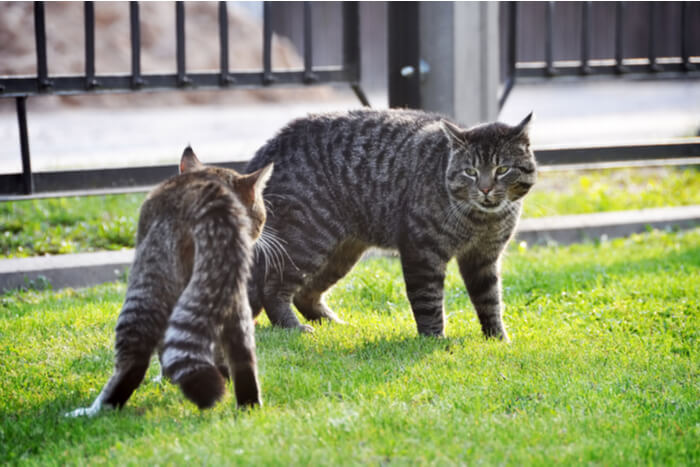
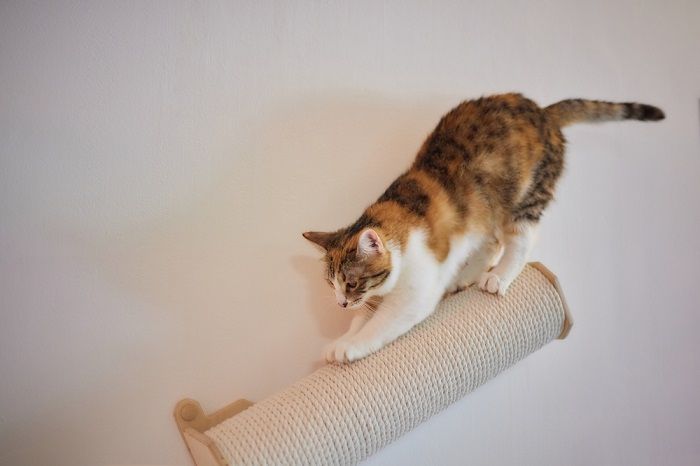

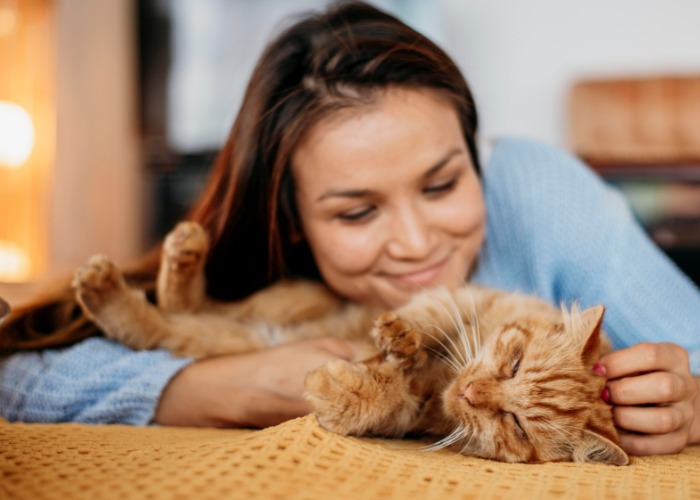
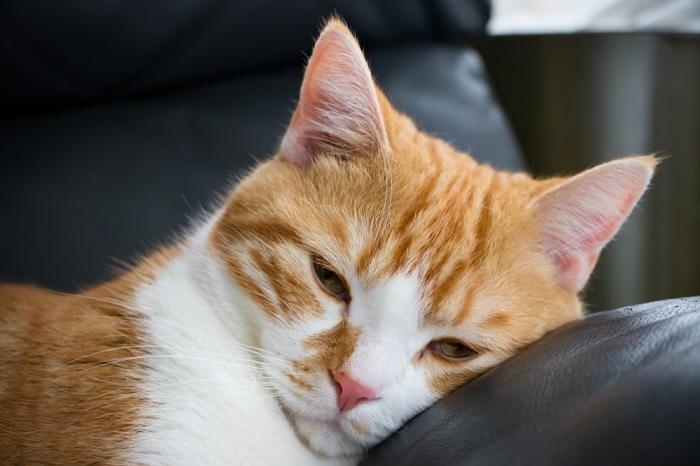
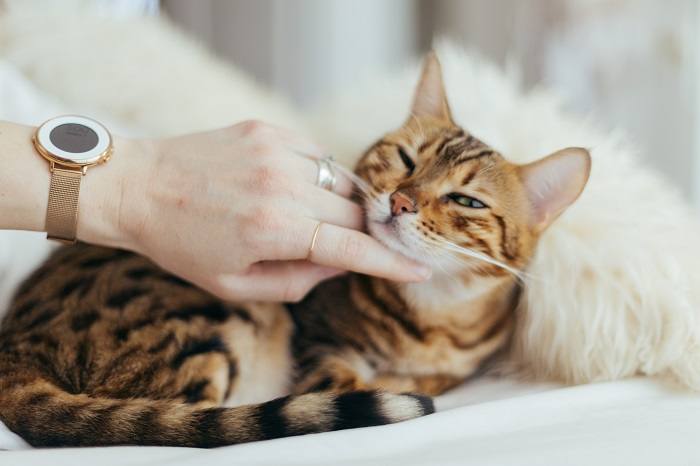



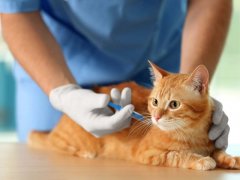
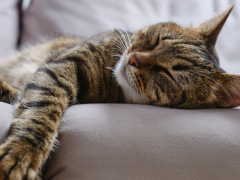



I need your help with my cat
Hi Sherri! Sorry about the late reply. How can we help?